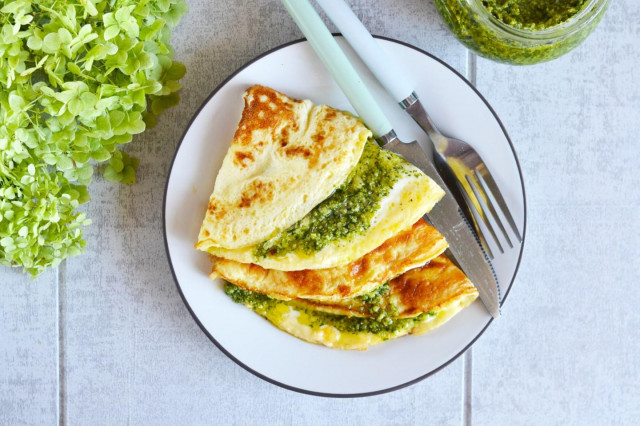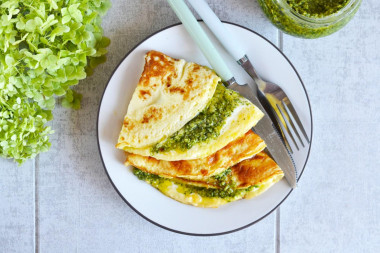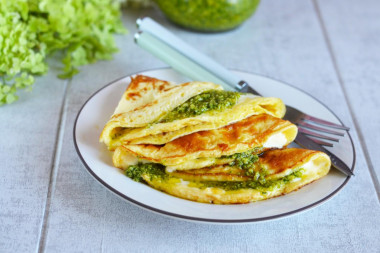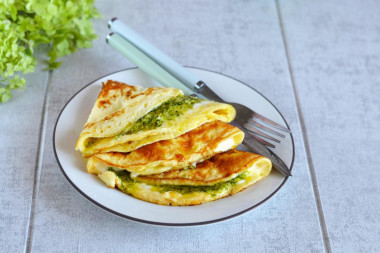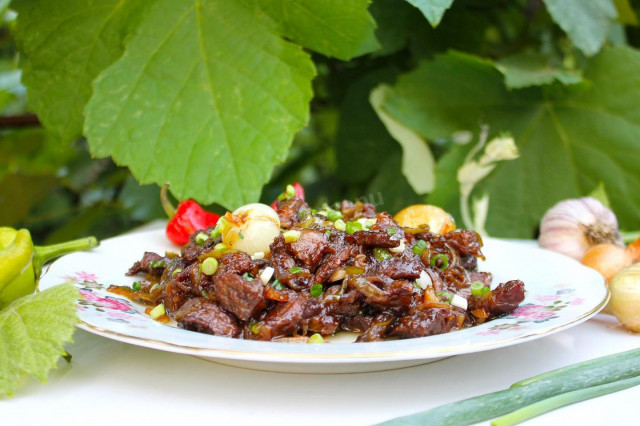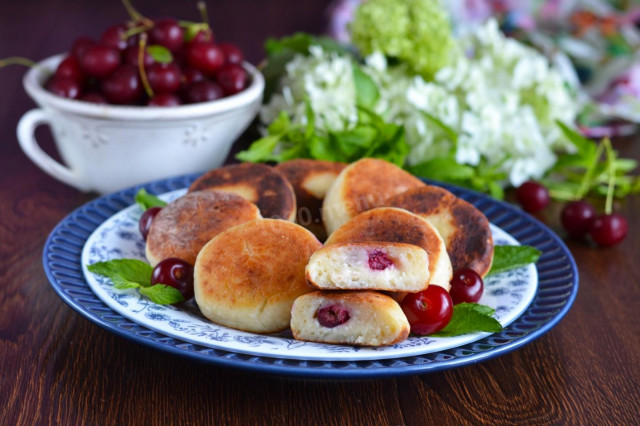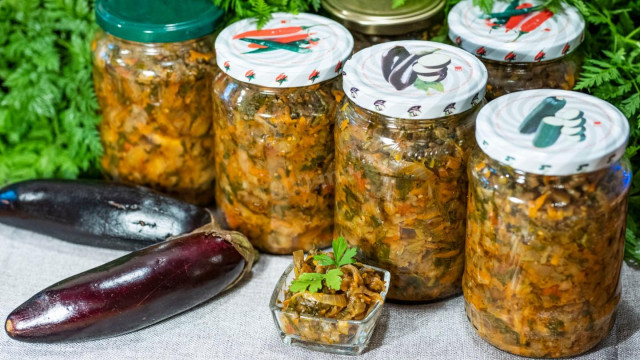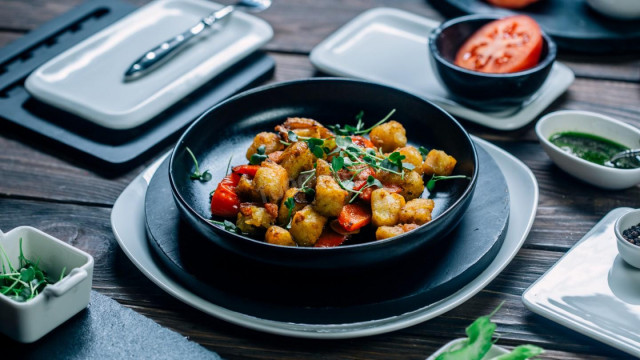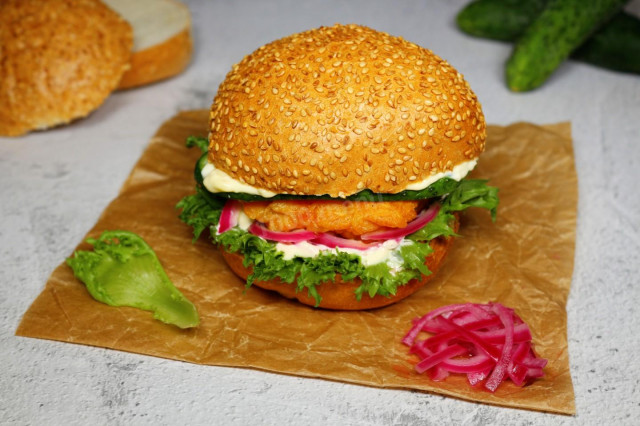Composition / ingredients
Step-by-step cooking
Step 1:
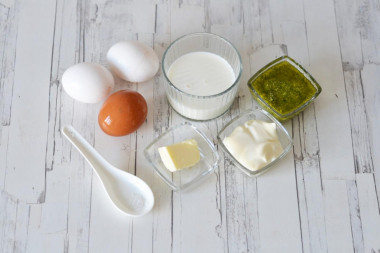
Prepare the necessary ingredients. Take large, selected eggs, preferably homemade - they have a bright orange yolk and an omelet will turn out a beautiful yellow color. If the eggs are small, use 4-5 pieces. Cream cheese can be replaced with cottage cheese. Pesto sauce can be used store-bought or prepared by yourself. I used the classic pesto in my recipe, which I originally made for pasta with shrimp, and added the leftovers to this omelet.
Step 2:
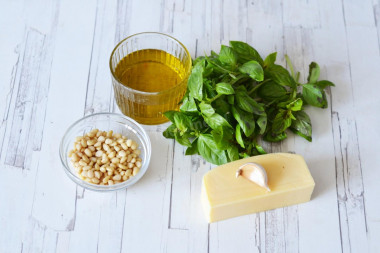
If you are going to cook pesto yourself, then the classic version of this sauce consists of a bunch of green basil, 50 g of parmesan, 50 g of pine nuts, 30 ml of olive oil, 1 clove of garlic.
Step 3:
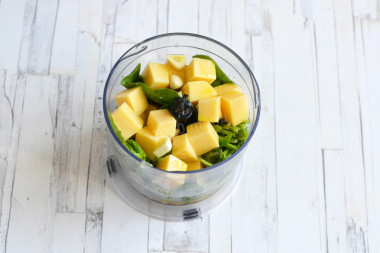
Everything needs to be crushed in a blender to the desired consistency, adding more olive oil if necessary. Ideally, you need to add 3-4 ice cubes to the blender.
Step 4:
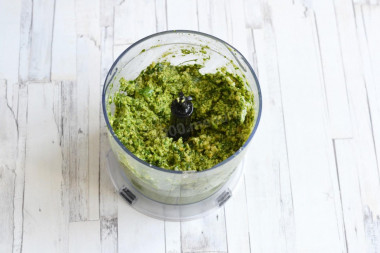
The sauce can be very fluid or more dense. Also, pesto, but not in the classical sense, can be prepared with other nuts, such as cashews. This sauce is stored in the refrigerator for no more than 2 days, store-bought - a little longer.
Step 5:
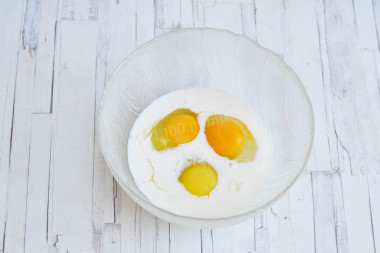
Break the eggs into a bowl, pour in the milk.
Step 6:
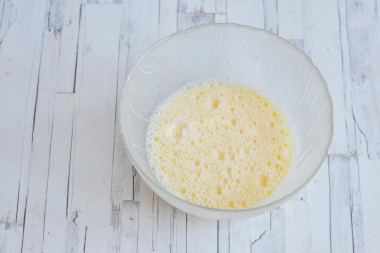
Add salt to taste and whisk with a special whisk until smooth. You should get a lush mass in which the yolk is well mixed with protein, and there will be no unbroken parts in the protein itself. If desired, you can add ground black pepper, chopped herbs or other spices to the egg mixture to taste.
Step 7:
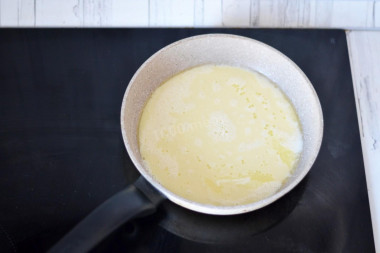
Heat part of the butter in a frying pan over low heat. Pour out half of the eggs beaten with milk.
Step 8:
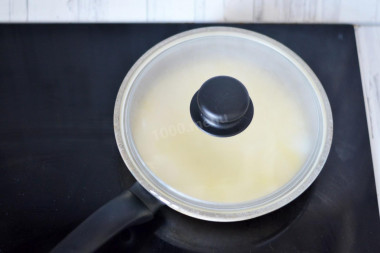
Cover the pan with a lid and fry the omelet for about 7-9 minutes until cooked. It is not necessary to turn over such an omelet. Transfer the finished omelet to a plate. Pour the rest of the egg mixture into the freed frying pan and cook another omelet pancake.
Step 9:
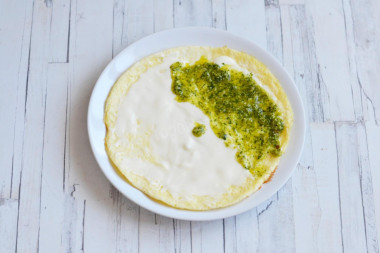
Grease the hot omelet pancakes first with cream cheese, then with pesto sauce. Take cream cheese melted soft, which can be easily spread on bread. Processed cheeses in the form of triangles may not fit here - they are too harsh and can tear a tender egg pancake. It is better to keep the cheese in the warmth of the kitchen for a while before spreading, so that it becomes more fluid.
Step 10:
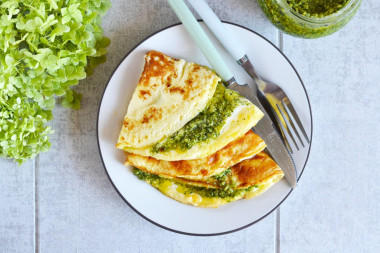
Fold the pancakes into quarters and serve hot. Bon appetit!
Be sure to wash the eggs before use, as even the seemingly clean shell may contain harmful bacteria. It is best to use food detergents and a brush.
How do I know if an egg is fresh? Break it into a separate container. First of all, there should be no unpleasant smell. The protein of fresh eggs will be transparent and clean. The yolk should not spread and will be shiny, convex, homogeneous.
Tip: if you are going to cook pesto yourself, make it in the evening so that you don't waste time on it in the morning.
Caloric content of the products possible in the composition of the dish
- Whole cow's milk - 68 kcal/100g
- Milk 3.5% fat content - 64 kcal/100g
- Milk 3.2% fat content - 60 kcal/100g
- Milk 1.5% fat content - 47 kcal/100g
- Concentrated milk 7.5% fat content - 140 kcal/100g
- Milk 2.5% fat content - 54 kcal/100g
- Chicken egg - 157 kcal/100g
- Egg white - 45 kcal/100g
- Egg powder - 542 kcal/100g
- Egg yolk - 352 kcal/100g
- Ostrich egg - 118 kcal/100g
- Butter 82% - 734 kcal/100g
- Amateur unsalted butter - 709 kcal/100g
- Unsalted peasant butter - 661 kcal/100g
- Peasant salted butter - 652 kcal/100g
- Melted butter - 869 kcal/100g
- Cream cheese with 50% fat content - 349 kcal/100g
- Pesto sauce - 565 kcal/100g

